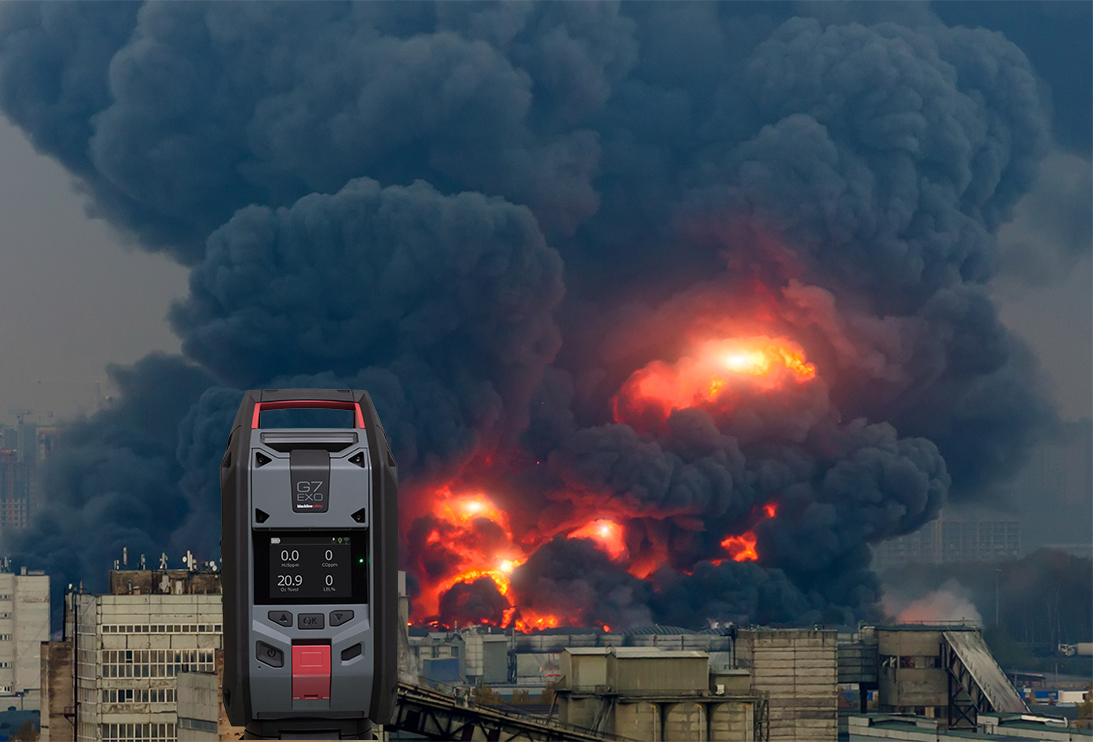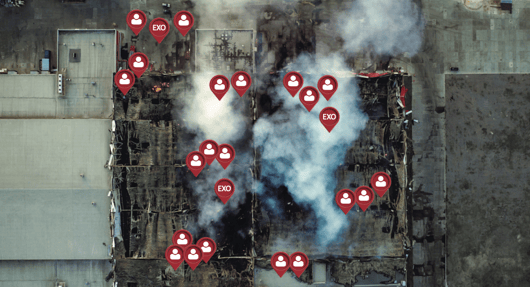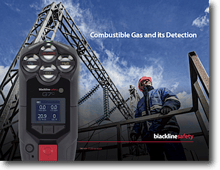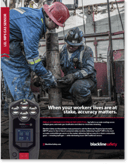Blackline Safety is a technology leader driving innovation in the industrial workforce through IoT (Internet of Things). With connected safety devices and predictive analytics, Blackline enables companies to drive towards zero safety incidents and improved operational performance. Blackline provides wearable devices, personal and area gas monitoring, cloud-connected software and data analytics to meet demanding safety challenges and enhance overall productivity for organizations with coverage in more than 100 countries. Armed with cellular and satellite connectivity, Blackline provides a lifeline to tens of thousands of people, having reported over 200 billion data-points and initiated over seven million emergency alerts. For more information, visit BlacklineSafety.com and connect with us on Facebook, Twitter, LinkedIn and Instagram.
Fire and Hazmat Response Series (3 of 3): Connected Safety Enables Retrospective Analytics After an Incident
Blackline Safety, Leader in Connected Gas Detection & Lone Worker Safety
May 05, 2021
 Throughout a hazmat response, portable gas detectors and area monitors give first responders and command centers the data and visibility they need to make time-sensitive decisions in the moment. In addition, when each team member wears a personal gas monitoring device that also tracks their location in real-time, it creates a complete connected safety ecosystem.
Throughout a hazmat response, portable gas detectors and area monitors give first responders and command centers the data and visibility they need to make time-sensitive decisions in the moment. In addition, when each team member wears a personal gas monitoring device that also tracks their location in real-time, it creates a complete connected safety ecosystem.
During the incident, these personal monitoring devices can help locate, position, and mobilize resources on the map. The devices automatically detect if a team member has fallen and needs help if they don’t acknowledge they are okay, a responder can activate an SOS Alert to notify others that they need backup. In the moment, personal monitoring devices protect the safety of each response team member even if they are separated from the rest of the team.
Connected safety devices, both personal and area monitors, generate a massive amount of data that can have immense continued value--even after the hazmat response is complete. Hazmat teams can (and should!) use data from these devices to evaluate the effectiveness of their response in retrospect, identify opportunities for improvement, and define data-driven strategies to improve future responses.
The following are 3 things to look for when choosing a connected safety solution that will provide the data and insights needed for retrospective analytics after an incident.
1. A Complete Connected Safety Solution
Getting valuable insights out of retrospective analytics starts with collecting the needed data--and the right data--to create a detailed picture of every aspect of the incident and the response. A complete connected safety solution for fire and hazmat response will include a network of area monitors and personal monitoring devices worn by every member of the team.
After the incident, location data from personal devices can be analyzed alongside the gas data from area monitors to visualize the entire response, including team member locations and movements relative to the hazard, in order to identify inefficiencies in the response. For example, team member location data can help the command center better understand where resources were located throughout the incident to understand how to better position and mobilize team members and increase efficiency and response speed for future incidents.
2. Robust Analytics and Reporting Interface

Gathering data from a connected safety solution is critical, but just having raw data from the connected safety devices isn’t enough. In fact, the sheer volume of data generated by these devices can be overwhelming without a powerful analytics platform that can help extract meaningful insights from that data. Look for connected safety devices that are backed by a robust analytics and reporting interface to extract valuable insights that the team can immediately use to improve their responses. This should also include full compliance reporting to confirm all devices are being bump tested and calibrated properly according to a pre-determined maintenance schedule.
3. Customizable Insights
Finally, look for a connected safety solution with a reporting interface that can provide the custom insights and data visualizations to meet your unique needs. For example, at Blackline Safety, we not only provide a complete suite of connected safety devices for fire and hazmat response, we also have a team of data scientists, called Blackline Vision, who are dedicated to creating customized dashboards to help customers get the most out of their data.
Speak with a Consultant
While real-time data enables better decision making and a faster response during an incident, retrospective analytics can help hazmat response teams identify areas of improvement and increase the effectiveness of the team's responses to future incidents. The key is to implement a complete safety solution, with connected gas detectors and area monitors, that provides the data, insights, and customization needed to give you the exact insights you need.
Contact Blackline Safety today to speak with one of our team about connected safety solutions for fire and hazmat.
LEARN MORE - Take Command of Your Fire and Hazmat Response
ADDITIONAL RESOURCES
Blog article: Fire and Hazmat Gas Monitoring Guide: Take Command of your Response
Fire and Hazmat Response Series
Preparation is more than key, it's vital. (1 of 3)
Take command safely, from anywhere. (2 of 3)
Hazmat incident assessment and steps to improve. (3 of 3)
READ MORE: KEEPING WORKERS SAFE WITH ACCURATE COMBUSTIBLE GAS DETECTION
>
|
|
|
Get In Touch
Let’s start a discussion about your safety challenges and needs.
Related Blog Posts
EXO Detects Underground Danger
April 04, 2025
It started with a strange sight—bubbling groundwater just outside the offices of Blackline Safety channel partner Aegis Safety in Brisbane,...
When Seconds Matter: Protecting Emergency Responders and the Public from Radiation
March 28, 2025
Picture the scene: a firefighter races to a dumpsite unaware that improperly disposed of radioactive materials are present. The Geiger counter at the...
Real-life Incident: Lieutenant Anderson II’s Story – The Silent Killer
February 25, 2025
‘The absolute worst atmosphere I've seen': How G6 alerted first responders to lethal CO levels The scene that greeted firefighters as they...



